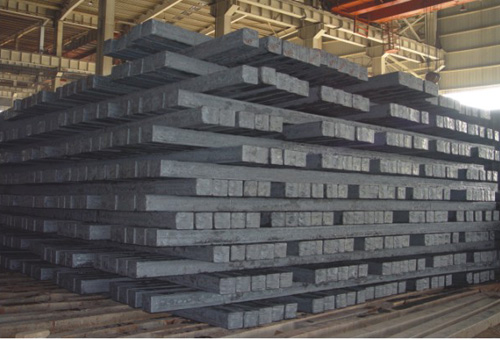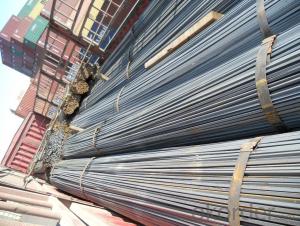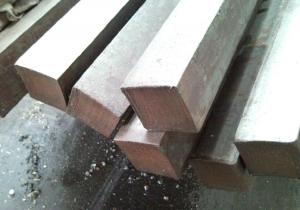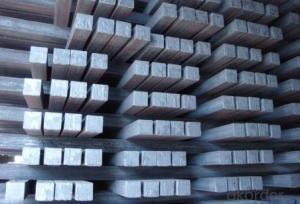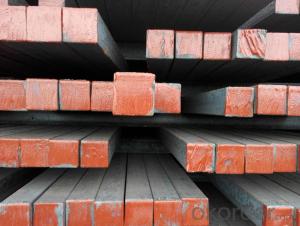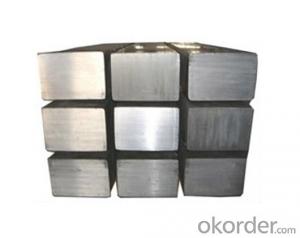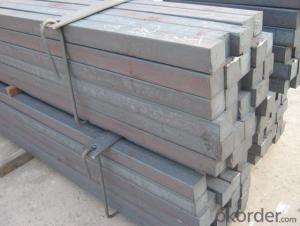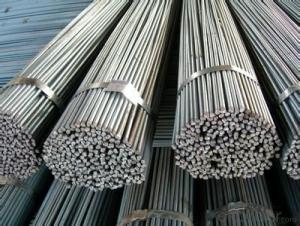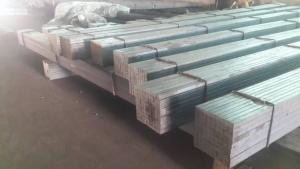Q195 Square bar square bar for construction
- Loading Port:
- Shanghai
- Payment Terms:
- TT or LC
- Min Order Qty:
- 10000 m.t.
- Supply Capability:
- 100000 m.t./month
OKorder Service Pledge
OKorder Financial Service
You Might Also Like
Product Description:
OKorder is offering Q195 Square Bar square Bar for construction at great prices with worldwide shipping. Our supplier is a world-class manufacturer of steel, with our products utilized the world over. OKorder annually supplies products to European, North American and Asian markets. We provide quotations within 24 hours of receiving an inquiry and guarantee competitive prices.
Product Applications:
Q195 Square Bar square Bar for construction are ideal for structural applications and are widely used in the construction of buildings and bridges, and the manufacturing, petrochemical, and transportation industries.
Product Advantages:
OKorder's Square Bar are durable, strong, and resist corrosion.
Main Product Features:
· Premium quality
· Prompt delivery & seaworthy packing (30 days after receiving deposit)
· Corrosion resistance
· Can be recycled and reused
· Mill test certification
· Professional Service
· Competitive pricing
Product Specifications:
We offer Square Steel Bar with grade Q195 / Q235
Specifications of Square Steel Bar:
-Standard: GB,
-Grade: Q195/Q235 or equivalent.
Chemical Composition:
-Chemical Composition. Q195
Standard | Grade | Element (%) | ||||
GB | Q195 | C | Mn | S | P | Si |
0.06~0.12 | 0.25~0.50 | ≤0.050 | ≤0.045 | ≤0.30 | ||
-Chemical Composition. Q235
Standard | Grade | Element (%) | ||||
GB | Q235B | C | Mn | S | P | Si |
0.12~0.20 | 0.30~0.70 | ≤0.045 | ≤0.045 | ≤0.30 | ||
Measures and Tolerances of Square Steel Bar:
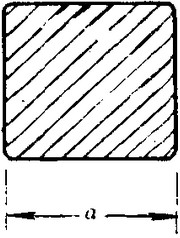
(The section of Square Steel Bar)
-The length of a side and the theoretical weight of Square Steel.
Length of a side(a, mm) | Theoretical weight(kg/m) | Length of a side(a, mm) | Theoretical weight(kg/m) |
6 | 0.283 | 32 | 8.04 |
7 | 0.385 | *33 | 8.55 |
8 | 0.502 | 34 | 9.07 |
9 | 0.636 | *35 | 9.62 |
10 | 0.785 | 36 | 10.17 |
11 | 0.950 | 38 | 11.24 |
12 | 1.13 | 40 | 12.56 |
13 | 1.33 | 42 | 13.85 |
14 | 1.54 | 45 | 15.90 |
15 | 1.77 | 48 | 18.09 |
16 | 2.01 | 50 | 19.63 |
17 | 2.27 | 53 | 22.05 |
18 | 2.54 | *55 | 23.6 |
19 | 2.82 | 56 | 24.61 |
20 | 3.14 | *58 | 26.4 |
21 | 3.46 | 60 | 28.26 |
22 | 3.80 | 63 | 31.16 |
*23 | 4.15 | *65 | 33.17 |
24 | 4.52 | *68 | 36.3 |
25 | 4.91 | 79 | 38.49 |
26 | 5.30 | 75 | 44.16 |
*27 | 5.72 | 80 | 50.24 |
28 | 6.15 | 85 | 56.72 |
*29 | 6.60 | 90 | 63.59 |
30 | 7.06 | 95 | 70.85 |
*31 | 7.54 | 100 | 78.50 |
Notes:
1, The theoretical weights in the list, base on the density of 7.85 g/cm3.
2, The numbers with *mean that they are not regulars or we don’t offer them.
-The allowed tolerance of Square Steel:
Length of a side(mm) | Allowed Tolerance | ||
Group1 | Group2 | Group3 | |
5.5~7 | ±0.20 | ±0.30 | ±0.40 |
7~20 | ±0.25 | ±0.35 | ±0.40 |
20~30 | ±0.30 | ±0.40 | ±0.50 |
30~50 | ±0.40 | ±0.50 | ±0.60 |
60~80 | ±0.60 | ±0.70 | ±0.80 |
80~110 | ±0.90 | ±1.0 | ±1.1 |
110~150 | ±1.2 | ±1.3 | ±1.1 |
150~190 | ―― | ―― | ±2.0 |
190~250 | ―― | ―― | ±2.5 |
Usage/Applications of Steel Square Bar:
-The Square Steel is normally used as structure steel.
-Row material for other structure steel like steel angles, channels, I-beams, H-beams, etc…
Packaging & Delivery of Steel Square Bar:
-Packing Detail: The products can be packed in bundles by steel wires.
-Marks:
1, Tag marks: the tag marks will be tied up to each bundle of the products. The information is usually including supplier’s logo and name, product name, made in China, products’ specifications, the painted color and other information requested by customers.
2, Color marks: we will paint both ends of the bundles of these products to make sure that they are more evident. It’s will be more convenient for the customers to distinguish them at the destination port.
-Delivery Detail: 30~45 working days after receive buyer’s T.T. or L/C.
FAQ:
Q1: What makes stainless steel stainless?
A1: Stainless steel must contain at least 10.5 % chromium. It is this element that reacts with the oxygen in the air to form a complex chrome-oxide surface layer that is invisible but strong enough to prevent further oxygen from "staining" (rusting) the surface. Higher levels of chromium and the addition of other alloying elements such as nickel and molybdenum enhance this surface layer and improve the corrosion resistance of the stainless material.
Q2: Can stainless steel rust?
A2: Stainless does not "rust" as you think of regular steel rusting with a red oxide on the surface that flakes off. If you see red rust it is probably due to some iron particles that have contaminated the surface of the stainless steel and it is these iron particles that are rusting. Look at the source of the rusting and see if you can remove it from the surface.

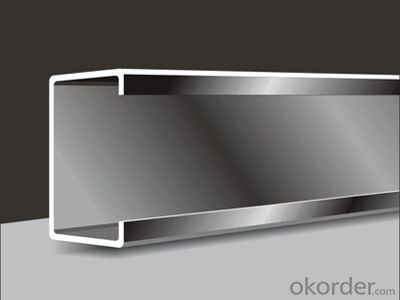
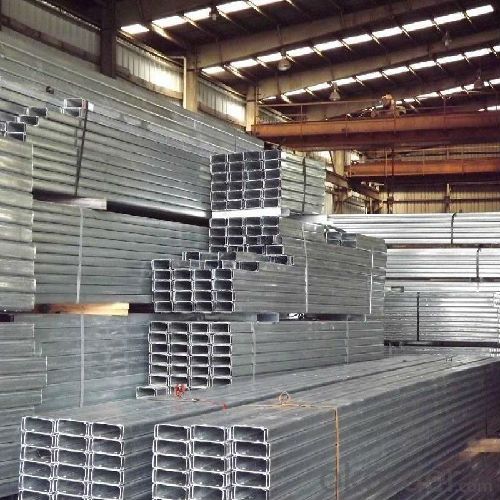
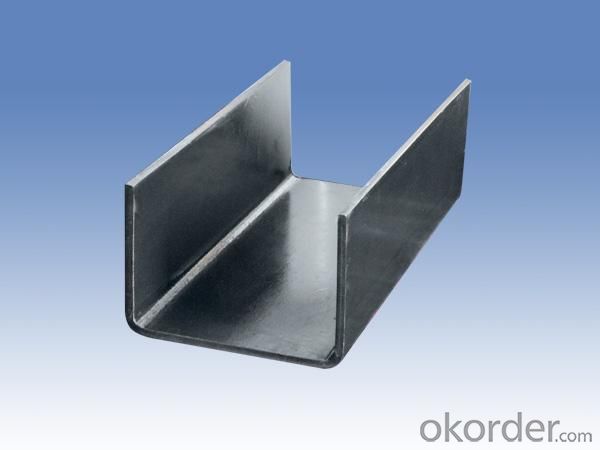
- Q: Can a steel square be used for checking the squareness of a cabinet door opening?
- Yes, a steel square can be used for checking the squareness of a cabinet door opening. A steel square is a tool commonly used in woodworking and construction to ensure that corners and edges are perfectly square. It consists of a long arm and a shorter arm that meet at a 90-degree angle. By placing the steel square against the corners of the cabinet door opening, you can determine if the angles are perfectly square or if adjustments need to be made. This is important in ensuring that the cabinet door will fit properly and function correctly once installed.
- Q: How do you use a steel square to measure and mark out compound cuts?
- To use a steel square to measure and mark out compound cuts, you will need to follow a few steps: 1. Understand the concept of compound cuts: Compound cuts involve making both angled and beveled cuts simultaneously on a workpiece, usually at different angles. This requires precise measurements and marking. 2. Choose the correct steel square: A steel square is a versatile measuring tool with a 90-degree angle. It typically consists of two arms: a shorter one called the tongue and a longer one called the blade. Select a steel square that is appropriate for your project and has clear markings for accurate measurements. 3. Measure the angles: Begin by determining the angles at which you need to make the compound cuts. Use the tongue of the steel square as a reference to measure the desired angles. Align the tongue with one edge of the workpiece and adjust the blade until it matches the desired angle. Take note of the angle readings on the steel square. 4. Mark the workpiece: Once you have determined the angles, use the steel square to mark the workpiece accordingly. Position the steel square on the workpiece, aligning the blade with one edge. Use a pencil or a scribe to mark the line along the blade. Repeat this process for each compound cut you need to make. 5. Transfer the marks: After marking the first cut on the workpiece, use the steel square to transfer the marks to other surfaces that need to be cut. Align the blade with the marked line and extend the mark onto the adjacent surface. 6. Double-check measurements: Before proceeding with cutting, double-check your measurements and marks to ensure accuracy. Use a protractor or angle gauge to verify the angles and make any necessary adjustments. 7. Cut the workpiece: With the measurements and marks in place, proceed to make the compound cuts on your workpiece using appropriate tools such as a saw or a miter saw. Follow the marked lines carefully to achieve the desired compound cuts. Remember, practice and precision are key when using a steel square to measure and mark out compound cuts. With experience, you will become more proficient in accurately measuring and marking complex angles for compound cuts.
- Q: Can a steel square be used for checking the squareness of a jointer knife?
- Using a steel square to check the squareness of a jointer knife is not possible. Although a steel square is commonly employed to assess the squareness of woodworking tools and machinery, it is not appropriate for this particular undertaking. Jointer knives necessitate the use of a specialized tool, such as a jointer knife gauge or a magnetic jointer knife setting gauge, which is specifically designed to accurately measure the squareness of the knife. These gauges typically feature a magnet that can be attached to the knife, enabling precise and dependable measurements. Utilizing a steel square for this purpose may yield inaccurate readings and potentially compromise the jointer's performance.
- Q: Can a steel square be used for stair railing installation?
- Yes, a steel square can be used for stair railing installation. The steel square can be used to accurately measure and mark angles, ensuring precise and straight cuts for the railing components. It can also be used to check the levelness and alignment of the railing during the installation process.
- Q: Can a steel square be used for checking the plumbness of a post hole?
- Yes, a steel square can be used for checking the plumbness of a post hole. A steel square is a versatile tool that is commonly used in woodworking and construction. It has a 90-degree angle that can be aligned with the sides of the post hole to check for plumbness. By placing the steel square against the sides of the hole, one can determine if the walls are straight and vertical. If the steel square does not align properly, adjustments can be made to ensure the post is set in a plumb position. However, it's important to note that while a steel square can be helpful for initial checking, a more accurate measurement can be obtained by using a plumb bob or a level to ensure the post is perfectly vertical.
- Q: Can a steel square be used for trellis layout and construction?
- Yes, a steel square can be used for trellis layout and construction. The steel square, also known as a framing square, is a versatile tool commonly used in carpentry and construction. It can be used to measure and mark angles, lay out straight lines, and create precise right angles, which are all essential for designing and constructing a trellis. The sturdy and durable nature of steel makes it suitable for outdoor use, ensuring the longevity and stability of the trellis structure.
- Q: Can a steel square be used for checking the squareness of window frames?
- Indeed, the squareness of window frames can be assessed by employing a steel square. The steel square, a multipurpose instrument frequently utilized in woodworking and construction for precision and squareness verification, is composed of a steel blade with a 90-degree angle at one extremity and a handle at the other. When positioning the steel square against the window frame, it is possible to ascertain if the corners are precisely perpendicular or if there exists any deviation from a right angle. Should the steel square fail to align appropriately with the corners, modifications can be undertaken to guarantee the squareness of the window frame before its installation.
- Q: Can a steel square be used for tile work?
- Yes, a steel square can be used for tile work. It can be a useful tool for measuring and marking tiles accurately, ensuring precise cuts and angles.
- Q: Can a steel square be used for laying out a deck?
- Yes, a steel square can be used for laying out a deck. A steel square, also known as a framing square or carpenter's square, is a versatile tool that can be used in various construction and carpentry projects, including deck building. It is commonly used to lay out and mark right angles, measure and mark cuts, and check for squareness and levelness. When laying out a deck, a steel square can be used to ensure the accurate positioning and alignment of the deck framing and support structures. It can be used to mark the layout of the deck boards, determine the placement of posts and beams, and verify that the deck corners are square. The steel square typically has two arms - a long one called the blade and a shorter one called the tongue. The blade is usually 24 inches long and the tongue is 16 inches long. These measurements make it convenient for deck layout since standard deck boards are often 6 or 8 feet long. The steel square allows for precise measurements and angles to be marked, ensuring a professional and accurate deck layout. Overall, a steel square is a reliable tool for laying out a deck as it provides the necessary accuracy and precision required for a successful and visually appealing deck construction project.
- Q: Can a steel square be used for checking the squareness of a drill press table?
- The squareness of a drill press table cannot be checked using a steel square. Although a steel square is effective for measuring right angles and checking the squareness of different objects, it is not intended for specifically checking the squareness of a drill press table. For a proper assessment of the drill press table's squareness, a precision square or a dial indicator would be more appropriate. These tools are specifically designed for measuring the alignment and squareness of surfaces. They offer precise readings and can identify any deviations from a perfect right angle. Although a steel square may offer a rough estimate, it cannot provide the necessary level of accuracy to ensure the squareness of a drill press table. It is always advisable to use the appropriate tools designed for the specific task in order to achieve accurate and dependable results.
Send your message to us
Q195 Square bar square bar for construction
- Loading Port:
- Shanghai
- Payment Terms:
- TT or LC
- Min Order Qty:
- 10000 m.t.
- Supply Capability:
- 100000 m.t./month
OKorder Service Pledge
OKorder Financial Service
Similar products
Hot products
Hot Searches
Related keywords



